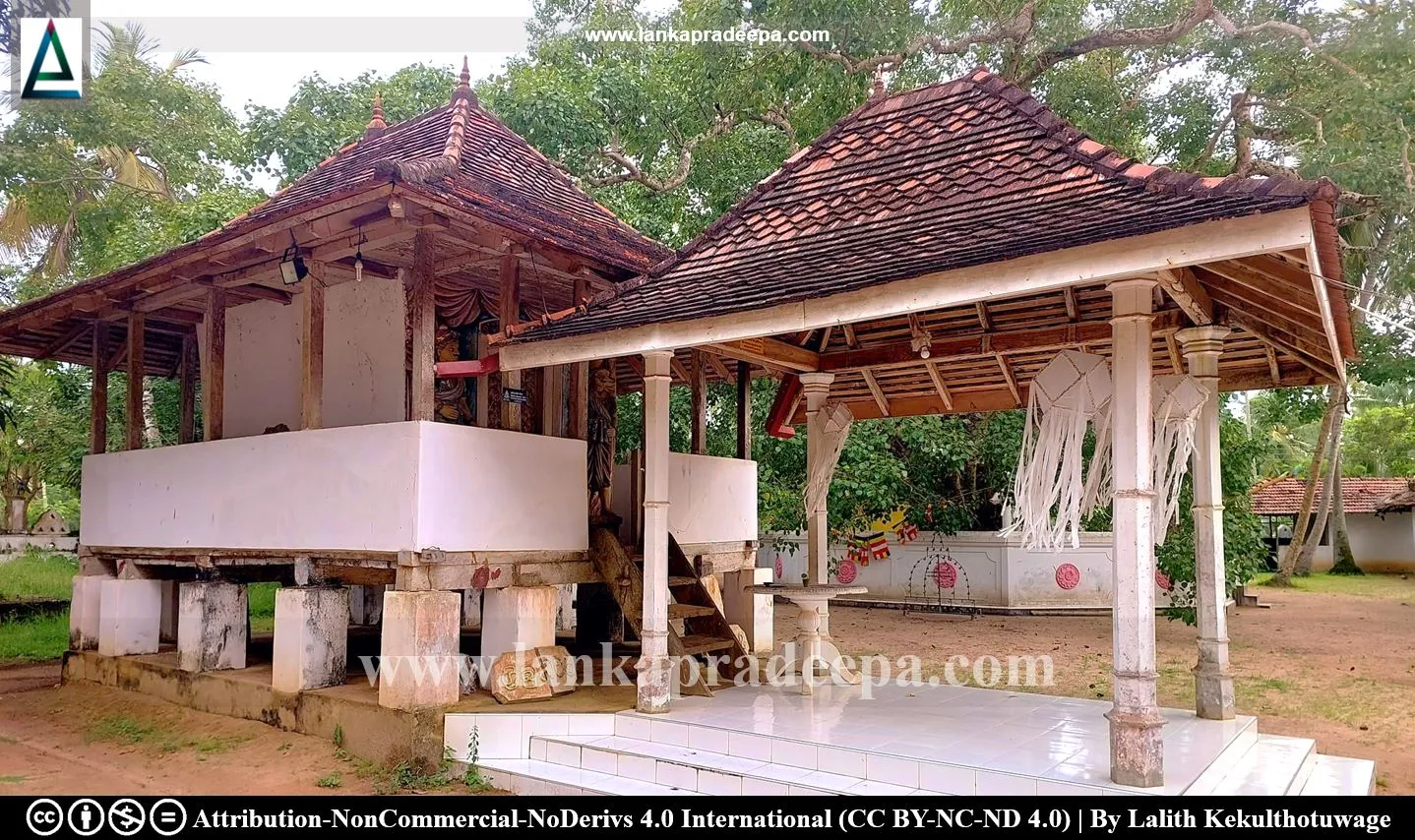
Sri Sunandarama Purana Raja Maha Viharaya, also known as Watuwatta Tempita Viharaya (Sinhala: වතුවත්ත ශ්රී සුනන්දාරාම පුරාණ රජමහා විහාරය), is a Buddhist temple in Wathuwaththa village in Kurunegala District, Sri Lanka.
History
The Tempita Viharaya of Watuwatta temple is considered a monument of archaeological value. Folklore attributes the construction of this Viharaya to a Kandyan King named Rajasinha probably King Kirti Sri Rajasinha [(1747-1781 A.D.) Anuradha & Kumari, 2015]. It is said that the king built it as a wish granted to a person who lived in the Watuwatta village (Anuradha & Kumari, 2015).
Tempita Viharaya
Tempita Viharas were popular in many Buddhist temples during the Kandyan Period. These structures were usually built on a wooden platform resting on bare stone pillars or stumps which are about 1-4 feet tall. The roof is generally made of timber and held by wooden stumps. The walls are usually made of wattle and daub and form the main enclosed shrine room containing Buddhist sculptures and murals in the Kandyan style. Some Tempita Viharas have narrow verandas and ambulatories circulating the main enclosed space. The construction of these buildings started in the 17th century and lasted until the end of the 19th century (Wijayawardhana, 2010).
Watuwatta Tempita Viharaya
The Tempita Viharaya of Watuwatta temple has been supported on 18 short pillars. Of them, 8 are made of stone while the remaining 10 are made of bricks and mortar (Anuradha & Kumari, 2015). A wooden flight of steps has been provided to reach the wooden deck. The small shrine room houses Buddha statues and its inner walls adorned with Kandyan style murals depicting usual Buddhist themes. A narrow ambulatory has been built around the shrine room for the usage of devotees.
A protected site
The Tempita Vihara, Dageba and the Poya Seema of Wathuwaththa Sri Sunandarama Vihara in the Gramaniladhari Division of Wathuwaththa in the Divisional Secretariat Division of Udubadhawa are archaeological protected monuments, declared by a government Gazette notification published on 6 July 2007.

.
Attribution
1) LankaPradeepa.com extends its gratitude to Lalith Kekulthotuwage for providing the necessary photographs required for this article. All the photos are published here with the permission of the author.
References
1) Anuradha, R.K.S.; Kumari, A.S., 2015. Pauranika Sthana Saha Smaraka: Kurunegala Distrikkaya (In Sinhala). Department of Archaeology (Sri Lanka). ISBN: 955-9159-37-2. pp.79-80.
2) The Gazette of the Democratic Socialist Republic of Sri Lanka. no: 1505. 6 July 2007. p.547.
3) Wijayawardhana, K., 2010. Sri Lankawe Tampita Vihara (In Sinhala). Dayawansa Jayakody & Company. Colombo. ISBN: 978-955-551-752-2. pp.12,278-286.
Explore Other Nearby Attractions
Location Map (Google)
This page was last updated on 21 October 2023

